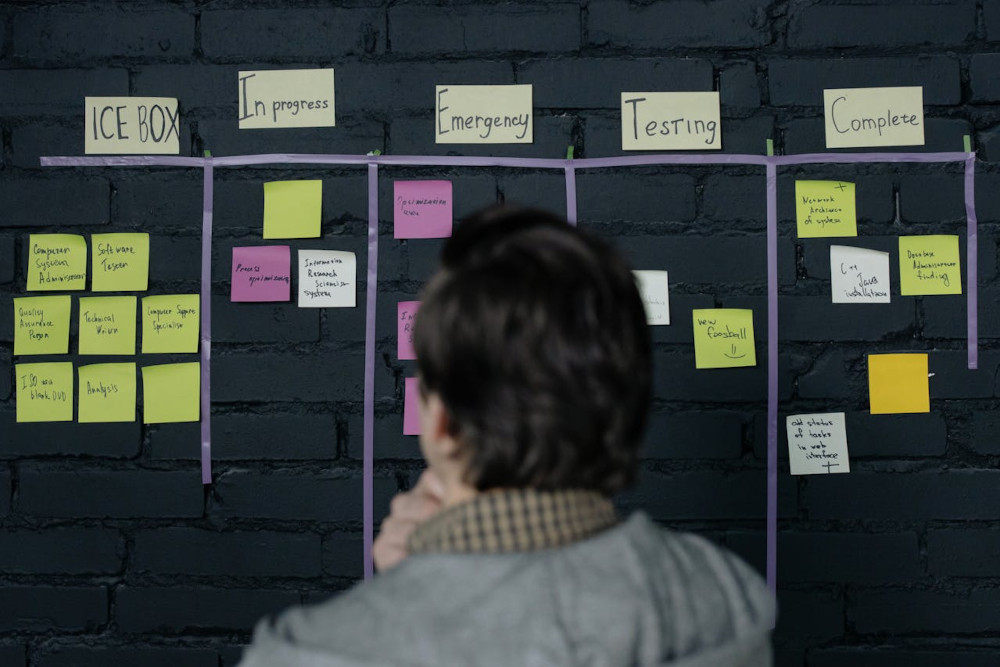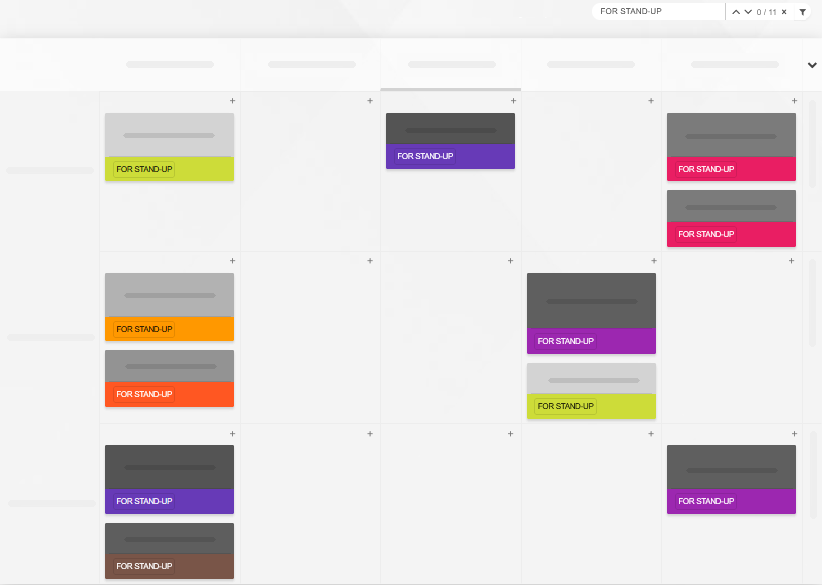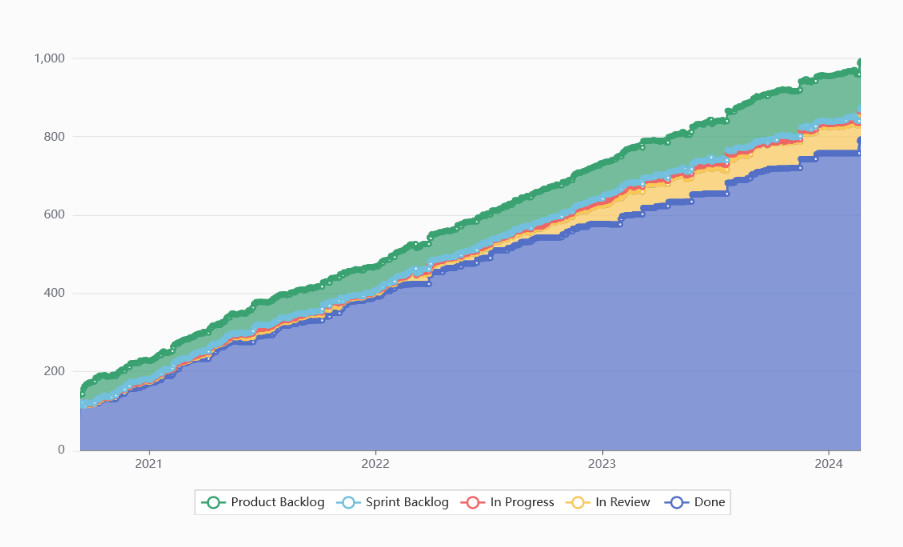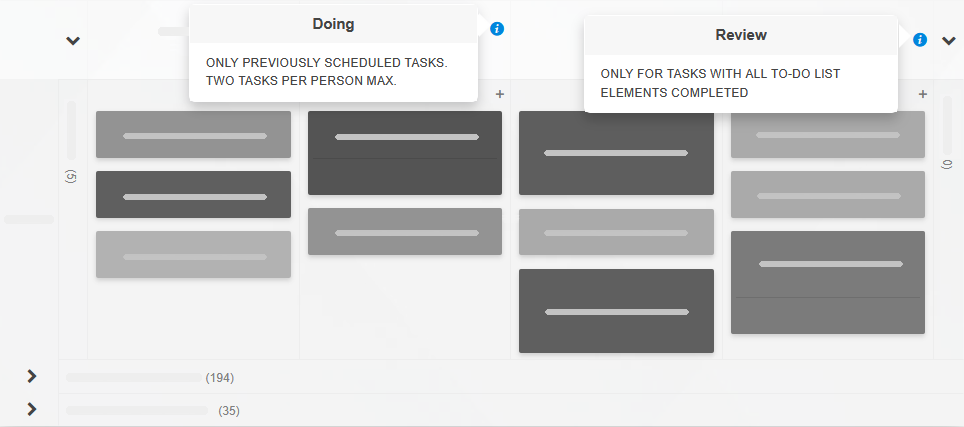Blog
Evolving Flow: The Strategic Fusion of Kanban and Kaizen20 May 2025

Organizations in which systems burst with complexity require tools that can effectively tame the chaos. Yet, the line between managing work and improving how work is done is surprisingly often blurred—or worse, ignored. Kanban and Kaizen, both deeply rooted in Japanese industrial evolution, address this duality from different angles. Kanban visualizes flow, Kaizen enforces continuous introspection. Separately, they offer control or change, but together, they can deliver compounding improvement.
This blog post isn't about project management tools, but operational metabolism.
Kanban: Managing the work, not the workers

The core of the Kanban framework for making work visible is limiting work-in-progress (WIP) and exposing process bottlenecks through visual management. Every card on the Kanban board is a piece of work pulling its weight through the process. WIP limits are not arbitrary, but create a tension, surfacing conflicts between demand and capacity.
While Kanban can reveal problems inside a process, it doesn’t fix them. That is where many teams trying the framework plateau: they implement Kanban, note initial gains in predictability, and then flatline. The insight doesn’t translate into action.
Kaizen: A culture of intentional discomfort
Kaizen, literally meaning "a change for the better", injects deliberate discomfort into otherwise comfortable routines. Kaizen isn't a workshop or an event, but a mindset operationalized through structured experimentation. Where Kanban can expose inefficiency, Kaizen can demand a response.
True Kaizen is not suggestion-box type innovation, nor is it a brainstorming session about “what could we be doing better”. It is hypothesis-driven, data-informed, and relentlessly focused on root problem cause elimination. But even more importantly, Kaizen is about creating agency: granting regular front-line workers the authority and structure to refine their work continuously.

Convergence: A feedback loop for operational evolution
Combining Kanban and Kaizen creates a self-regulating loop of process awareness and adaptation. Kanban surfaces constraints, such as queues swelling in development, defects piling up in testing, or the demand for frequent context switching. Kaizen provides the operational discipline to investigate those constraints, try micro-improvements there and then, and iterate.
To make it clear: without a Kaizen lens, Kanban can easily become just an observational tool, able to watch the underlying system fail slowly. On the other hand, without Kanban, Kaizen will likely lack focus; improvements may become scattered, disconnected, and harder to measure. The synergy of the two lies in their complementary feedback cycles: one sees, another acts.
Practical integration
Integrating Kaizen into a Kanban environment does require a structural commitment. Here’s what it may look like in practice:
- Daily stand-ups as mini-Kaizen moments
Many Kanban teams already hold daily standups. Elevating a part of that meeting to ask “What one small experiment can we try today to improve flow?” brings Kaizen into the daily operational rhythm.
- Operations reviews powered by Cumulative Flow diagrams
Instead of generic retrospectives, teams analyze trends in the cycle time, flow efficiency, and blocked work. Rather than explaining away any variations, they are investigated through Kaizen events.
- Explicit Kaizen policies within the board
Teams embed improvement criteria into workflow policy definitions. A card cannot move unless it meets certain quality or process metrics. Thanks to this, improvement is no longer peripheral, but embedded in the gatekeeping logic of the system.
- Visualizing improvement efforts as first-class citizens
Improvement work should not become an overhead, but get tracked in its own swimlane or task type on the board. It helps avoid the trap of relegating Kaizen efforts to “when we have the time”.
The hidden dividend: Institutional memory and learning velocity
Most process tools aim to reduce waste. Integrated Kanban and Kaizen do more than that: they accelerate organizational learning. Every experiment, successful or not, becomes a case study. Every failed hypothesis becomes a record of what didn’t work, refining the decision-making heuristics over time.
This aspect is especially vital in knowledge-based work, where waste isn’t measured in discarded materials but in fragmented cognition, invisible handoffs, and unchallenged assumptions. By visualizing flow and institutionalizing feedback, the Kanban-Kaizen combination builds a system that delivers more, but also learns faster.
Beyond efficiency: Building anti-fragile systems
Efficiency is an interim goal; what high-functioning systems need is adaptability. When market shifts occur, constraints tighten, complexity scales, the organizations that thrive are those with responsive operating systems. The combination of Kanban and Kaizen is the backbone of such systems. Not by enforcing rigidity, but by enabling and normalizing dynamic recalibration.
So, not only does the Kanban and Kaizen integration make work visible and/or improved, it makes it easily evolvable.
In the end, pairing Kanban with Kaizen is not about improving how fast things move. It’s about ensuring that each movement teaches something. The goal isn't optimizing the process once, but embedding optimization into the process itself. Kanban with Kaizen isn't a work methodology, but a vital survival strategy.
Sign up for a 14-day free trial
to test all the features.
Sign up now and see how we can help
your organization deliver exceptional results.